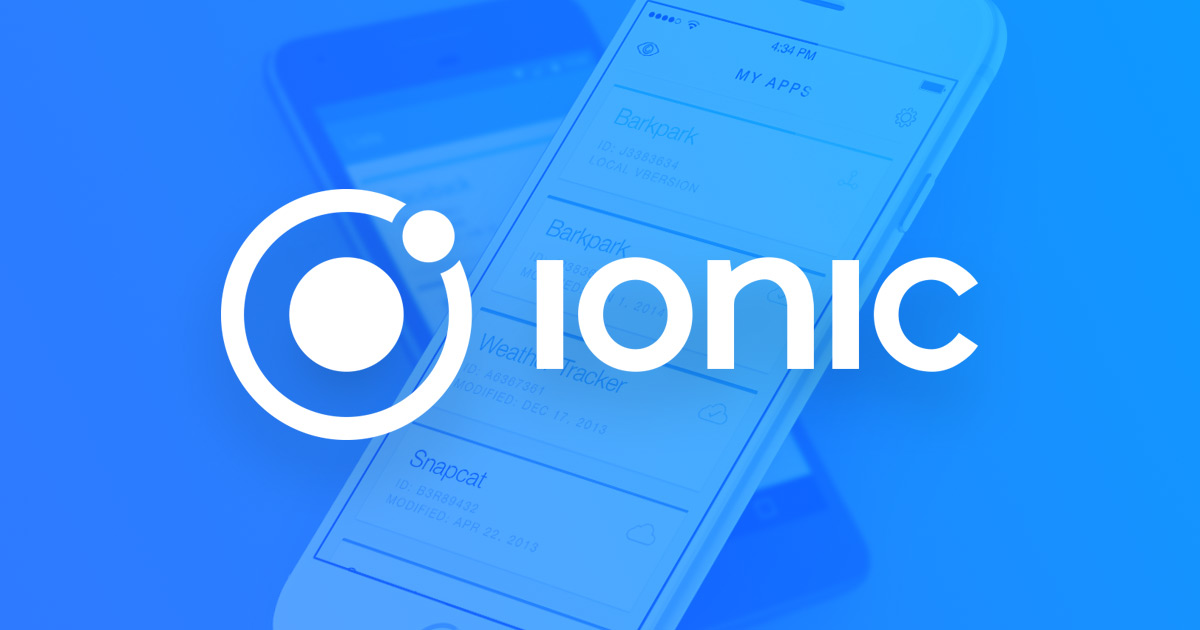Introduction to Ionic

Introduction to Ionic
Ionic is an open source UI toolkit for building performant, high-quality mobile apps using web technologies — HTML, CSS, and JavaScript — with integrations for popular frameworks like Angular, React, and Vue.
Overview
Ionic focuses on the frontend UX and UI interaction of an app — UI controls, interactions, gestures, animations. It's easy to learn, and integrates with other libraries or frameworks, such as Angular, React, or Vue. Alternatively, it can be used standalone without any frontend framework using a simple script include. If you’d like to learn more about Ionic before diving in, we created a video to walk you through the basics.
One codebase, running everywhere
Ionic is the only mobile app stack that enables web developers to build apps for all major app stores and the mobile web from a single codebase. And with Adaptive Styling, Ionic apps look and feel at home on every device.
A focus on performance
Ionic is built to perform and behave great on the latest mobile devices with best practices like efficient hardware accelerated transitions, and touch-optimized gestures.
Clean, simple, and functional design
Ionic is designed to work and display beautifully on all current mobile devices and platforms. With ready-made components, typography, and a gorgeous (yet extensible) base theme that adapts to each platform, you'll be building in style.
Native and Web optimized
Ionic emulates native app UI guidelines and uses native SDKs, bringing the UI standards and device features of native apps together with the full power and flexibility of the open web. Ionic uses Capacitor (or Cordova) to deploy natively, or runs in the browser as a Progressive Web App.
Goals
Cross-platform
Build and deploy apps that work across multiple platforms, such as native iOS, Android, and the web as a Progressive Web App - all with one code base. Write once, run anywhere.
Web Standards-based
Ionic is built on top of reliable, standardized web technologies: HTML, CSS, and JavaScript, using modern Web APIs such as Custom Elements and Shadow DOM. Because of this, Ionic components have a stable API, and aren't at the whim of a single platform vendor.
Beautiful Design
Clean, simple, and functional. Ionic is designed to work and display beautifully out-of-the-box across all platforms. Start with pre-designed components, typography, interactive paradigms, and a gorgeous (yet extensible) base theme.
Simplicity
Ionic is built with simplicity in mind, so that creating apps is enjoyable, easy to learn, and accessible to just about anyone with web development skills.
Framework Compatibility
While past releases of Ionic were tightly coupled to Angular, version 4.x of the framework was re-engineered to work as a standalone Web Component library, with integrations for the latest JavaScript frameworks, like Angular. Ionic can be used in most frontend frameworks with success, including React and Vue, though some frameworks need a shim for full Web Component support.
JavaScript
One of the main goals with moving Ionic to Web Components was to remove any hard requirement on a single framework to host the components. This made it possible for the core components to work standalone in a web page with just a script tag. While working with frameworks can be great for larger teams and larger apps, it is now possible to use Ionic as a standalone library in a single page even in a context like WordPress.
Angular
Angular has always been at the center of what makes Ionic great. While the core components have been written to work as a standalone Web Component library, the @ionic/angular package makes integration with the Angular ecosystem a breeze. @ionic/angular includes all the functionality that Angular developers would expect coming from Ionic 2/3, and integrates with core Angular libraries, like the Angular router.
React
Ionic now has official support for the popular React library. Ionic React lets React developers use their existing web skills to build apps that target iOS, Android, and the web. With @ionic/react, you can use all the core Ionic components, but in a way that feels like using native React components.
Vue
Ionic now has official support for the popular Vue 3 library. Ionic Vue lets Vue developers use their existing web skills to build apps that target iOS, Android, and the web. With @ionic/vue, you can use all the core Ionic components, but in a way that feels like using native Vue components.